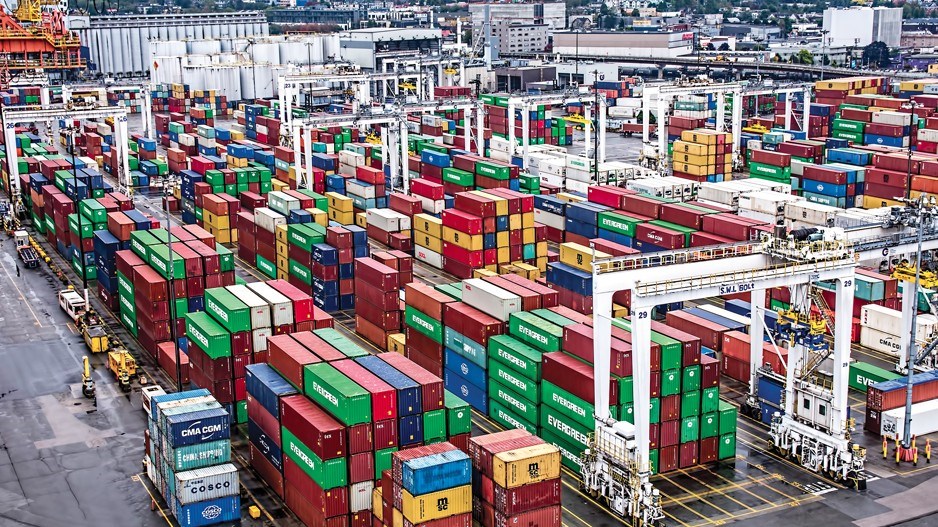There’s a reason your online order is taking longer than it should to get to your doorstep; there’s a global shipping crisis and unfortunately small businesses are taking the brunt of it.
Major retailers like Costco and the Home Depot have resorted to chartering their own cargo ships and aircraft to maintain their supply chains. IKEA has even begun to buy its own shipping containers to reduce the risk of supply shortages.
But small businesses don’t have the resources to charter their own airplanes and cargo ships or to buy their own containers. To make matters worse, shipping companies are prioritizing some large retailers over small businesses because of the global container cargo capacity shortage.
“The small businesses that are putting their freight in a container with the freight of 10 other small businesses, depending on the rate they’re prepared to pay, are going to see their product not prioritized necessarily,” said Julia Kuzeljevich, director, policy and communications at the Canadian International Freight Forwarders Association. “You see that with air freight all the time.”
Rapidly escalating shipping cost increases have a greater impact on the financial stability of smaller businesses than their larger multinational counterparts.
Not only are small Canadian businesses having difficulties importing goods, small Canadian exporters are also –°¿∂ ”∆µ priced out of the market.
Robert Lewis-Manning, president of Canada’s Chamber of Shipping, said it is more profitable for shippers to send empty containers back to Asia to be refilled with higher priced imports destined for Canada than it is to wait for Canadian exporters to fill those containers in Canada.
“They’re just not getting access to that export capacity like they used to,” said Lewis-Manning. “Because there’s such a demand for imports and the price of [imports] is –°¿∂ ”∆µ driven to new levels, [Canadian exporters] just can’t get access to a container.”
There are many factors contributing to the shipping squeeze, including shortages of labour, ships and containers, and they are all increasing costs up and down the supply chain.
While travel restrictions were limited to passengers, the loss of passenger travel and the decline in the number of aircraft servicing passenger routes meant that shippers could no longer load the belly of those planes with goods. They consequently turned to other transportation options like rail and sea, and that has added to the supply chain congestion. Shipping costs have risen sharply across the board, especially for air transportation, which Kuzeljevich said has quadrupled.
As reported in last week’s BIV (Cargo Congestion Creates B.C. Port Opportunities — Issue 1665; September 27-October 1), port congestion on major trade routes like the transpacific continues to slow container terminal operations. For example, up to 60 container ships per day are waiting to be unloaded at the Los Angeles-Long Beach port complex in California. They are consequently waiting as long as three weeks to get a berthing spot.
Regular shipping patterns and rhythms have also been disrupted.
Typically global shipping goes through seasonal changes with peaks and valleys, but that is no longer the case.
“With COVID and the whole e-commerce phenomenon, there is no peak period anymore that shippers and carriers can forecast around,” said Kuzeljevich. “It’s just become one big mess of unpredictability.”
This continuous demand on shipping infrastructure has compounded the stress on the global trade system that is already struggling to cope with shortages and supply issues exacerbated by the pandemic.
Congestion and disruption is nothing new to the shipping industry. It has had to deal with extreme weather conditions and other extraordinary events such as the grounding of a mega-container ship that blocked the Suez Canal for nearly a week in March. The delays stranded goods for a few days or even weeks, but the industry has never dealt with the wide-ranging consequences of the pandemic.
“All this just backlogged, so there was never the ability to recover,” said Kuzeljevich. “We’re talking probably into the first or second quarter of 2022, by most estimates, before you see some relief, and even that’s unpredictable right now.”
But some B.C. small businesses are benefiting from the increased shipping traffic, at least ones within the industry.
Prince Rupert and other Canadian ports have been experiencing increased traffic, and Kuzeljevich said that ancillary businesses are also seeing increased business. However, those benefits are far outweighed by the difficulties many other small businesses are facing as a result of the global shipping crisis.

